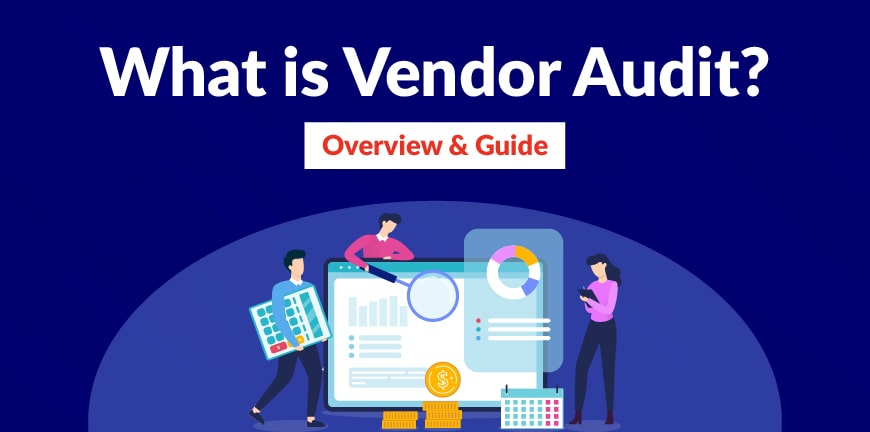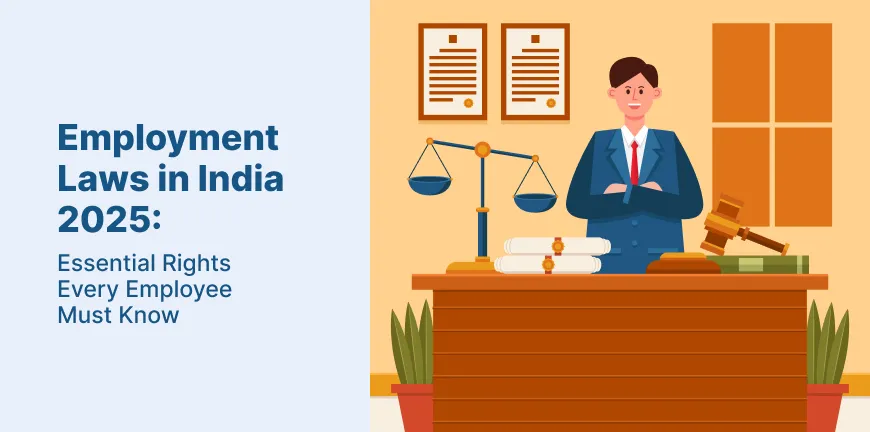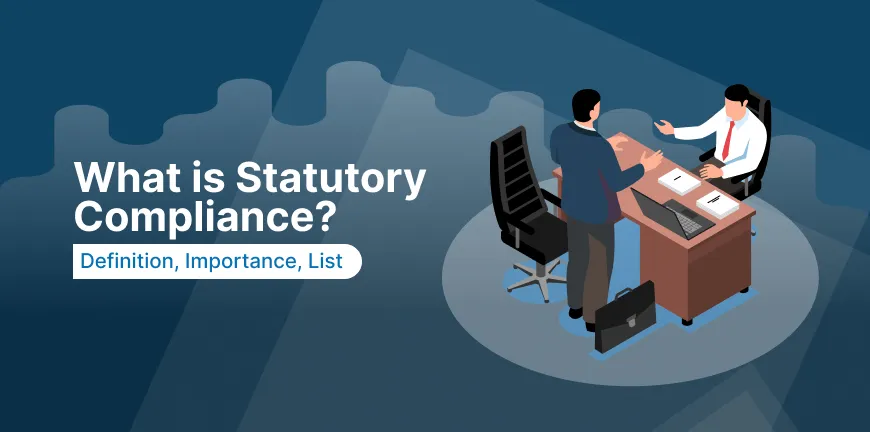
Is JLPT Certification Necessary for Working in Japan?
04/07/2025
PLI Schemes & Talent Demand in India’s Semiconductor Drive
04/07/2025- What Is a Vendor Audit?
- Why Are Vendor Audits Important?
- What is Included in the Vendor Audit Checklist?
- What are the Types of Vendor Audits?
- What is the Vendor Audit Process: Step-by-Step
- What are the Best Practices for Effective Vendor Audits?
- What are the Common Challenges in Vendor Audits?
- Frequently Asked Questions (FAQs)
The business landscape is evolving quickly, and fast delivery without compromising quality seems to be the mantra of success and staying competitive. To deliver fast products and services, most industries and establishments are taking the route of outsourcing most of their operations by forming strong partnerships with vendors who provide specialised services.
Although this arrangement offers enormous scalability and flexibility, maintaining vendor compliance across geographies and changing regulatory requirements is complicated. To maintain healthy company-vendor partnerships and navigate through complex regulatory frameworks, a robust vendor auditing system is paramount.
So, what is a vendor audit, and how does it work? Let’s dive deep and understand vendor audit meaning from a 360-degree perspective.
What Is a Vendor Audit?
Vendor audit meaning is simple and states that ” Vendor audit is a step-by-step process of conducting a thorough assessment of vendor processes, relationships, and contracts to ensure adherence to internal organisational policies, regulatory requirements, and applicable industry standards.
The main goal, as per vendor audit definition, is to optimise vendor performance, identify and mitigate vendor process discrepancies and risks at an early stage, and effectively maintain vendor relationships.
Any vendor risks unaddressed can lead to compliance violations for the parent company, leading to penalties and lawsuits, resulting in monetary losses and brand reputation damage.
Why Are Vendor Audits Important?
Here are the reasons that shed light on the importance of vendor audit:
1. Proactive Risk Mitigation
The business arena rapidly changes paradigms due to skyrocketing customer expectations, market fluctuations, frequently changing regulatory requirements, etc. These changes disrupt operations for both parent companies and their vendors alike. Early detection and mitigation of discrepancies and possible violations through a robust vendor audit checklist is the best way to achieve vendor compliance year-round.
2. Building Robust Vendor Partnerships
Period audits through a mutually beneficial supplier audit checklist can pave the way to build stronger supplier partnerships. By giving actionable pointers and practical strategies, companies can enhance vendors’ operational efficiency multiple times and promote mutual growth.
3. Enhanced Operational Efficiency
It is imperative to clearly establish vendor management audit objectives and promptly run the vendor audit process. This approach will help in discovering discrepancies at an early stage. This feedback loop method will enhance operational efficiencies, resulting in higher productivity and increased business growth.
4. Maintaining Brand Reputation
As a parent company, it is important to realise that the product delivery quality largely depends on the vendor’s supply quality. A detailed vendor audit procedure will provide diligent guidance in verifying if the suppliers are following industry best practices like sustainable sourcing, flawless quality checks, etc., to deliver quality products consistently. This approach will help companies maintain their brand reputation and deliver an enhanced customer experience.
5. Controlling Costs
Through a detailed and diligent vendor audit report, companies can identify invoice errors, contract violations, or quality issues and set mitigation strategies that can help reduce costs, reduce the chances of product failure, and prevent expensive legal liabilities.
What is Included in the Vendor Audit Checklist?
Here is a detailed third-party vendor audit checklist that companies or external supplier audit agencies must verify and validate to ensure vendor compliance goals are met.
1. Vendor Details
- Company name, operating location address, and contact details of the supplier/vendor.
- Supplier Registration details
- Supplier certifications like ISO-9000, ISO-14001, GDPR, SOC2, etc.
- Contractual agreements and terms.
2. Quality Management System
- Documentation of the vendor’s QMS (quality management system)
- Evidence of alignment with relevant quality standards.
- Internal and external supplier audit report, along with management reviews.
3. Product Specifications
- Product specifications and requirement review.
- Verification that products meet expected standards & specifications.
- Documentation of any non-conformities.
4. Supplier Performance
- Evaluation of previous performances, including delivery time, product quality, and responses to issues.
- Records of any prior corrective actions or complaints.
5. Production Processes
- A thorough assessment of the vendor’s production processes and expansion capabilities.
- Verification of process controls and QA measures.
- Inspection of production facilities, if feasible.
6. Material Traceability and Control
- Documentation of material traceability throughout the complete supply chain.
- Verification of material testing and inspection procedures.
- Confirmation of material sourcing practices and compliance with regulations.
7. Quality Control Measures
- Inspection of in-process quality control measures.
- Verification of inspection and testing methods.
- Review of quality control records and documentation.
8. Packaging & Labelling
- Thorough checking of packaging methods & materials used.
- Verification records of product marking and labelling before transit.
- Ensure that packaging integrity and protection during transit are assessed.
9. Document Control
- Confirmation that operational documents are precise, updated to the latest date, and audit friendly.
- Control procedures documentation access that includes version control and necessary view permissions.
10. Compliance and Regulatory Requirements
- Verification & validation of alignment with relevant regulatory requirements and standards.
- Documentation of certifications, licenses, and permits.
- Assessment of any environmental or social responsibility practices.
11. Non-Conformance Management
- Review of procedures for managing non-conformities and corrective actions.
- Documentation of any pending non-conformities and their resolution status.
12. Continuous Improvement
- Assessment of the vendor’s commitment to continuous improvement.
- Documentation of any suggestions or recommendations for improvement.
13. Management Review
- Evidence of management involvement and oversight of quality processes.
- Records of management reviews and actions taken as a result.
14. Audit Findings and Follow-Up
- Compilation of audit findings and observations.
- Assignment of corrective actions and follow-up procedures.
- Confirmation of corrective actions taken and their effectiveness.
What are the Types of Vendor Audits?
Here are the 5 types of vendor audits performed by companies or third-party agencies to ensure suppliers are compliant from a 360 perspective, to ensure vendor audit meaning is justified.
1. Compliance Audit
Through a detailed third party vendor audit checklist, companies or reputed compliance audit agencies like ALP Consulting will make a thorough assessment and arrive at an outcome of whether a vendor adheres to legal mandates and contractual obligations. This kind of supplier audit process covers operational licenses, labour laws, certifications, environmental considerations, and industry-specific standards to eliminate possible compliance risks.
2. Quality Audit
With the help supplier audit checklist and a supplier quality audit procedure, the audit agency will assess the vendor’s QMS quality management systems from end-to-end, production processes, and quality inspection procedures. This ensures products or services consistently meet required quality and safety standards.
3. Financial Audit
Through a robust vendor audit checklist, third-party auditors will review the vendor’s overall financial health, solvency, and creditworthiness. The agency will analyse audited statements, cash flows, and liabilities to confirm stability and long-term viability as a supply partner.
4. Process Audit
With the assistance of the supplier audit process, the process auditors will assess on-floor workflows, resource utilisation, and process controls. This mode of assessment will support external and internal audit teams in identifying gaps, potential process inhibitors, and improvement opportunities to enhance overall performance and delivery capabilities.
5. Sustainability & ESG Audit
Through a strong supplier audit process, third-party auditors will verify sustainability sourcing practices, social responsibility, and management policies. This ensures ethical sourcing, waste reduction, and compliance with sustainability frameworks and corporate ESG goals.
What is the Vendor Audit Process: Step-by-Step
Here is the step-by-step vendor audit process followed by most third-party agencies to conduct end-to-end vendor audits:
1. Set up clear vendor management audit objectives
Identify the areas of assessment: Compliance, quality, cybersecurity, delivery speed or a combination. Cover all the areas to gain maximum benefits of supplier audits.
2. Prepare a priority vendor list
Focus on preparing a priority vendor list that handles sensitive data or provides critical services. The audit agency must ensure that audits are carried out according to this list as part of supplier audit best practices.
3. Collect Documentation
As a part of the supplier quality audit procedure, collect records like contracts, previous audit reports, financial statements, compliance reports, etc., for verification and validation.
4. Run the vendor audit
Run a physical vendor audit process like production policies and procedure assessment, staff evaluation, financial statements verification, etc., to identify non-compliance and risks and make recommendations. Use industry-specific supplier audit checklists to maintain consistency.
5. Analyse Results
Compare the vendor performance against expectations, mark the areas of improvement, and discuss possible action plans to fix non-compliance risks and discrepancies.
6. Report and Act
Generate a detailed vendor audit report and share findings with the vendor. The audit agency will create actionable correction steps to ensure 100% compliance is achieved in all areas of business operations. Set up follow-up timelines and measure progress.
What are the Best Practices for Effective Vendor Audits?
Here are the supplier audit best practices that can make the auditing process more effective and generate accurate outcomes beneficial for both companies and their vendors.
- Ensure the vendor audit checklist is in line with the regulatory requirements.
- Stay updated with the latest regulations and streamline the vendor audit process according to the latest mandates stipulated by the state and central government, third-party regulatory agencies.
- Conduct periodic vendor audits at least every quarter to ensure accuracy and compliance.
- Ensure the supplier workforce is trained and aware of the latest vendor compliance practices and policies.
- Set up vendor management audit objectives in a manner that aligns with business goals rather than the other way around.
What are the Common Challenges in Vendor Audits?
The common challenges encountered in vendor audits include:
- The chances of having insufficient documentation and record maintenance are high, as vendors may not have the resources to afford sophisticated data management systems.
- Checking the quality of each consignment delivered by vendors is extremely challenging, which can lead to compliance risks at some point in time.
- Compliance regulations are subject to frequent changes, making it difficult for agencies to standardise supplier audit processes.
- Currently, vendors are spread across geographies and synchronising auditing policies to match regulations for all vendors is not practically possible.
Frequently Asked Questions (FAQs)
1. What is the meaning of vendor audit?
Vendor audit meaning refers to a process where a third-party agency or a company that uses supply chains to develop products and services reviews a vendor’s processes, compliance, quality systems, and capabilities to ensure they meet contractual and regulatory requirements.
2. Why do companies conduct vendor audits?
Companies run a supplier audit process to mitigate risks, ensure product quality, verify compliance, assess financial stability, and maintain reliable, ethical supply chain relationships.
3. Who is responsible for performing a vendor audit?
Usually, internal audit teams, procurement specialists, or third-party auditors are responsible for carrying out an end-to-end vendor audit procedure on behalf of the purchasing organisation.
4. What are the main steps in the vendor audit process?
The main steps involved in the supplier audit process include planning, vendor audit checklist preparation, on-site assessment, documentation review, reporting findings, corrective action follow-up, and final approval decision.
5. What is the difference between a vendor audit and a supplier audit?
In most cases, they can be used interchangeably without any problem. However, “vendor audit” often emphasises service providers, while “supplier audit” focuses more on material or product suppliers.
6. What is the difference between a vendor audit and a financial audit?
A vendor audit process reviews operational compliance and processes, whereas a financial audit strictly examines financial statements for accuracy and regulatory adherence.
Contact Us For Business Enquiry

Hariharan Iyer
Hariharan Iyer is the Vice President – Operations at ALP Consulting, bringing over 40+ years of experience in HR outsourcing and labour law compliance. He leads end-to-end HRO operations, ensuring process efficiency, statutory compliance, and seamless service delivery for clients across industries. With a strong background in labour law governance and workforce management, Hariharan plays a key role in driving operational excellence and compliance-led HR solutions at ALP Consulting.




